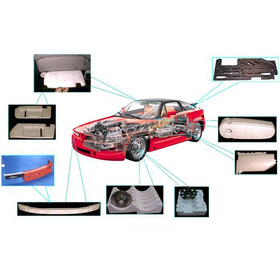What is the adhesive technology that achieves high precision for automotive sensing cameras?
Free technical materials available! We propose suitable solutions tailored to various substrates!
In this article, the General Manager of the Automotive Solutions Sales Department at our Global Sales & Marketing Headquarters will explain the adhesive technology that achieves high precision for in-vehicle sensing cameras. In recent years, more and more vehicles have been equipped with advanced driver assistance systems (ADAS) such as automatic braking when a danger is detected and the ability to maintain lane while following the car in front, categorized as Level 1 and Level 2. Essential for realizing these ADAS features, as well as the more advanced Level 3 and above autonomous driving functions expected to become widespread in the future, is the "in-vehicle sensing camera." Many recent cars have cameras mounted on the rearview mirror located in front of the windshield inside the cabin, and there is a growing number of models that also include cameras mounted on the front, rear, and sides of the vehicle. As the technology for ADAS and autonomous driving continues to spread, the demand for in-vehicle sensing cameras is expected to increase, with projections indicating that it will more than double over the six years from 2020 to 2026. *For more detailed information, please refer to the related links. For further inquiries, feel free to contact us.*
Inquire About This Product
basic information
"Application of High-Precision Fixing Technology for Smartphone Camera Parts to Automotive Sensing Cameras" The adhesion of optical components that make up the camera is directly linked to blurriness and degradation of image quality if even slight deviations in position or angle occur. Therefore, a fixing precision on the order of micrometers (one-thousandth of a millimeter) is required, taking into account the curing shrinkage during adhesion. Dexerials has been refining the technology of using adhesives for fixing components that make up conventional mobile phone cameras since around 2004. Cameras mounted in traditional mobile phones were secured with "screws," but as mobile phones became thinner and smaller, and with the advent of smartphones leading to miniaturization and increased functionality of cameras, it became increasingly difficult to secure components with screws, resulting in the generalization of adhesive fixing. Since around 2015, the use of automotive cameras as sensors for safe driving has increased, necessitating high fixing precision to maintain sensing accuracy, which has led to a growing demand for our adhesive technology. *For more detailed information, please refer to the related links. For further inquiries, please feel free to contact us.*
Price range
Delivery Time
Applications/Examples of results
*You can view the detailed content of the article through the related link. For more information, please feel free to contact us.*
catalog(1)
Download All CatalogsCompany information
Dexerials Corporation has business offices and sales bases not only in Japan but also in Asia, including China, as well as in Europe and the United States. We continue to provide products with new value that meet customer needs tailored to each market. By adding new technologies to our existing products, we aim to maintain and strengthen our business. Moving forward, we will boldly challenge the automotive and life sciences sectors, steadily nurturing and expanding new businesses, while advancing the development of technologies that will pave the way for the future. As a company that creates new value that is not found anywhere else, we strive to maximize customer value and continue to challenge ourselves to become a trusted partner for our customers and society.












